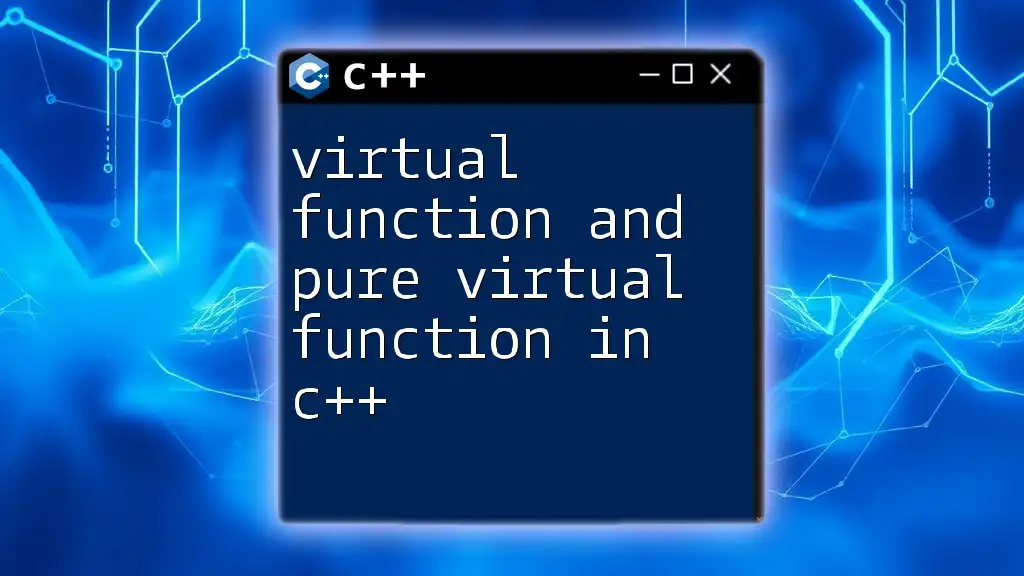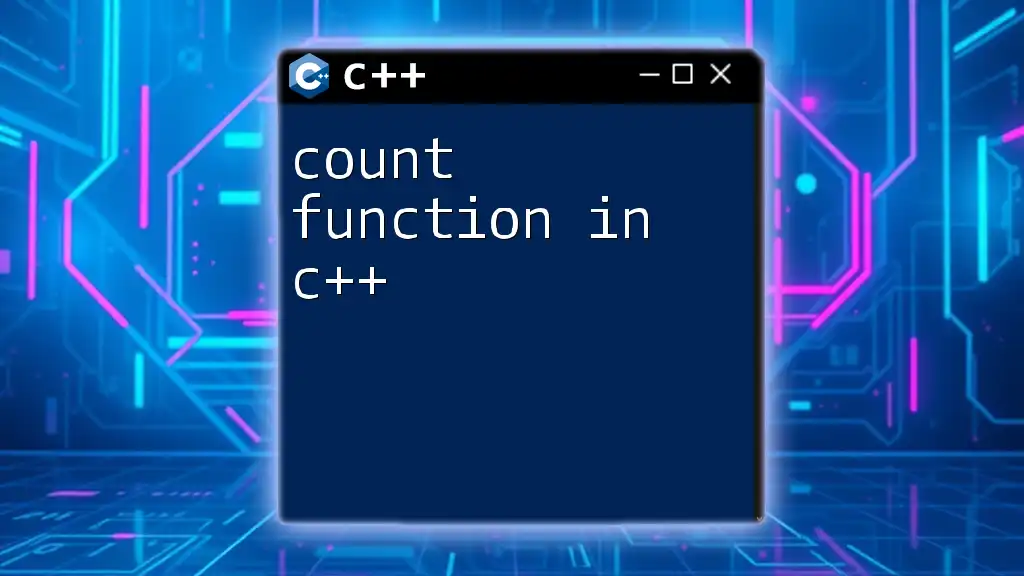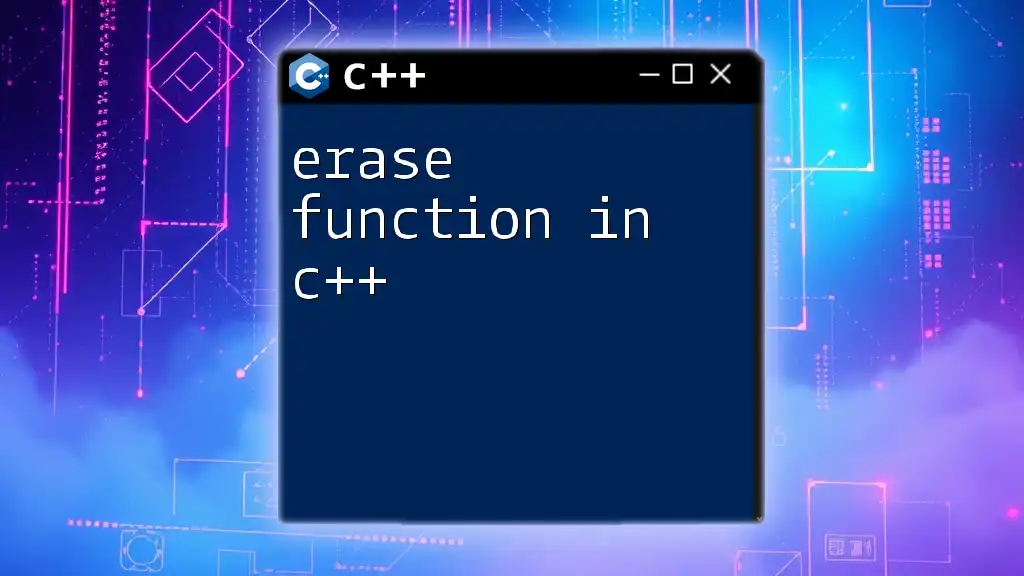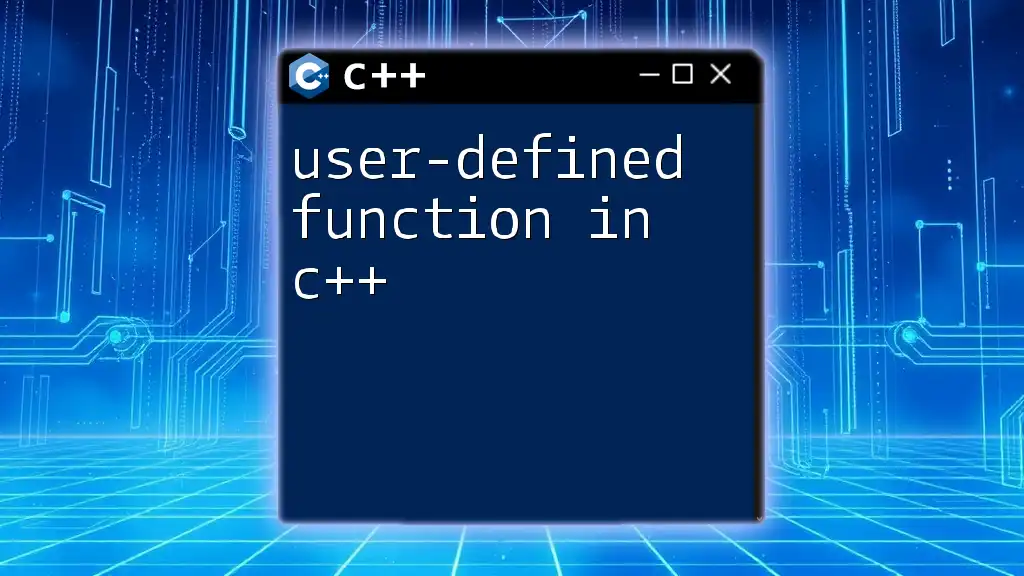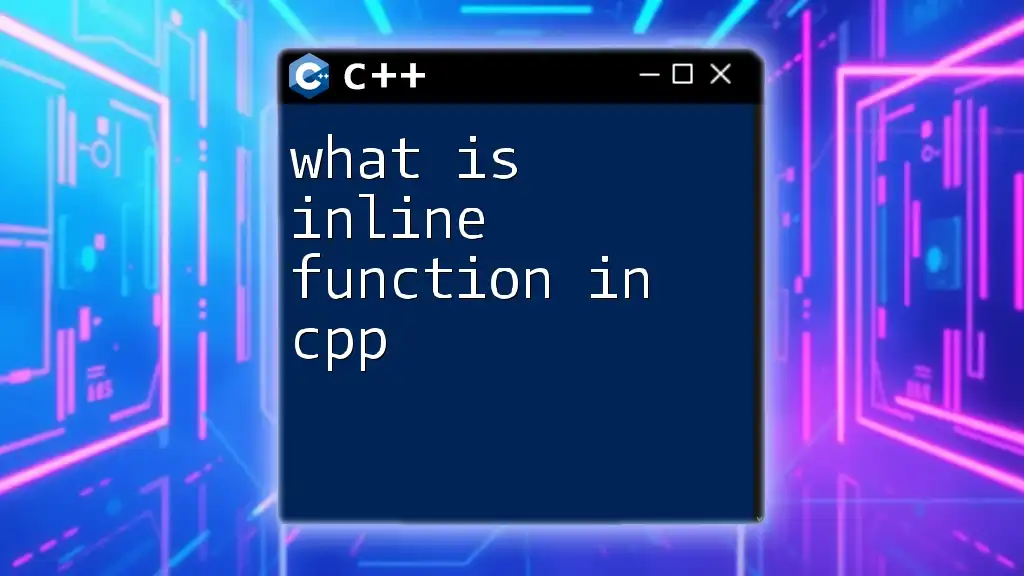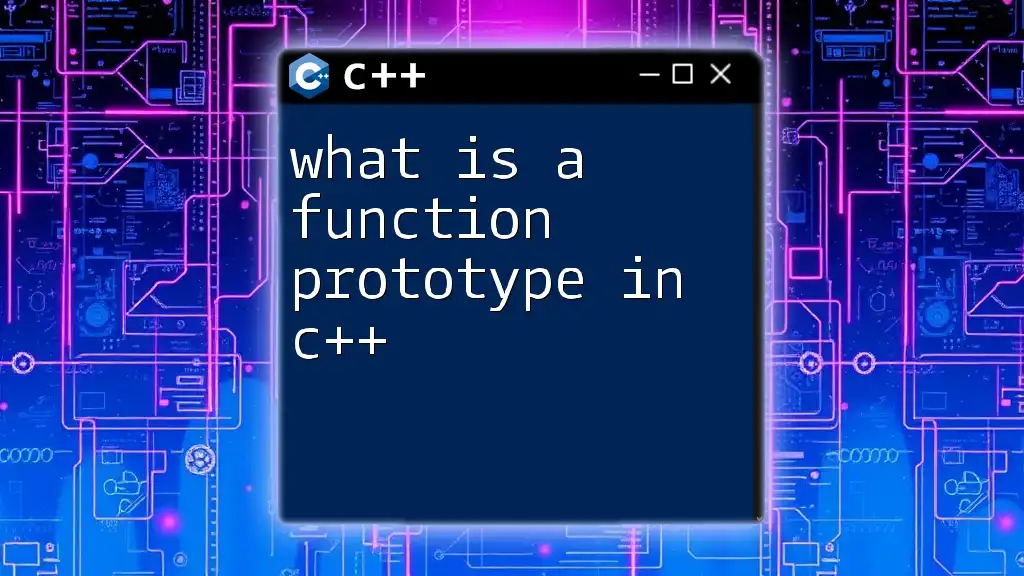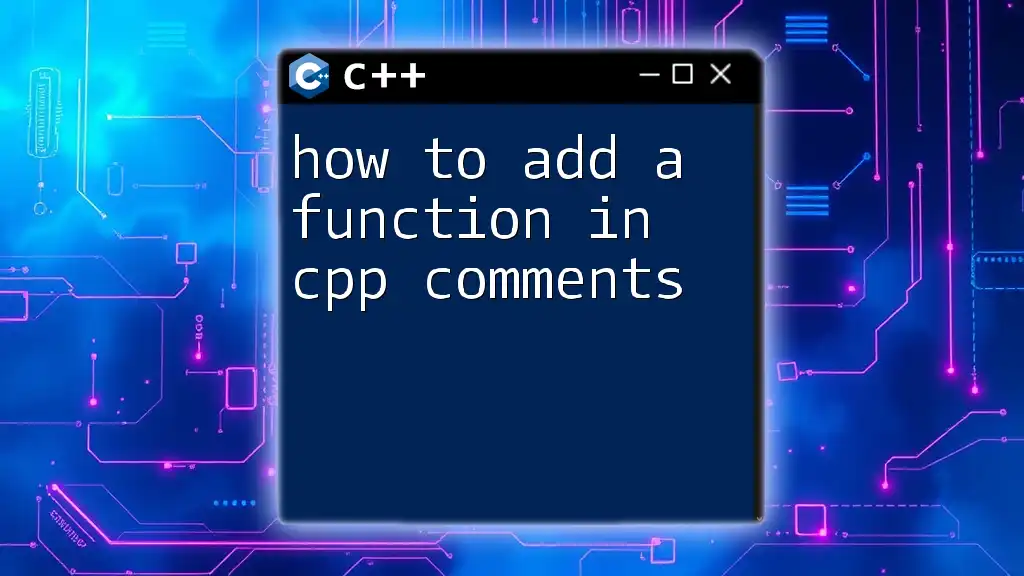In C++, a virtual function allows derived classes to override it for dynamic polymorphism, while a pure virtual function (declared with `= 0`) enforces that derived classes must implement this function, making the base class an abstract class.
Here's a sample code snippet demonstrating both concepts:
#include <iostream>
class Base {
public:
virtual void show() { // Virtual function
std::cout << "Base class show function called." << std::endl;
}
virtual void display() = 0; // Pure virtual function
};
class Derived : public Base {
public:
void show() override { // Overriding the virtual function
std::cout << "Derived class show function called." << std::endl;
}
void display() override { // Implementing the pure virtual function
std::cout << "Derived class display function called." << std::endl;
}
};
int main() {
Derived obj;
obj.show();
obj.display();
return 0;
}
Understanding Virtual Functions in C++
What are Virtual Functions?
A virtual function in C++ is a member function in a base class that you expect to override in derived classes. When you use a virtual function, you're telling the compiler to support polymorphism, which allows you to call the correct function based on the object type at runtime, rather than compile-time. This capability enhances the flexibility and maintainability of the code.
In practical terms, virtual functions enable you to define common interfaces in a base class and implement them in various derived classes, allowing for dynamic method resolution—an essential feature of many programming paradigms.
Syntax of Virtual Functions
Declaring a virtual function is straightforward. You use the `virtual` keyword in the base class's function declaration. Here’s an example:
class Base {
public:
virtual void display() {
std::cout << "Display Base" << std::endl;
}
};
class Derived : public Base {
public:
void display() override {
std::cout << "Display Derived" << std::endl;
}
};
In this code snippet, `Base` class has a virtual function `display()`, which is overridden in the `Derived` class.
How Virtual Functions Work
When you declare a virtual function, C++ maintains a virtual table (vtable) and a virtual pointer (vptr) for each class with virtual functions. The vtable is essentially an array of pointers to the virtual functions of the class, while the vptr is a pointer that points to the vtable.
When an object of a derived class is created, its vptr points to the vtable of that derived class. If you invoke a virtual function, the program checks the vptr to call the appropriate function based on the actual object type, not the type of reference or pointer used.
For example:
Base* b = new Derived();
b->display(); // Output: Display Derived
In the above code, although `b` is a pointer of type `Base`, it points to an object of type `Derived`. Thus, the `Derived` class's `display()` function is called, illustrating the concept of dynamic binding.
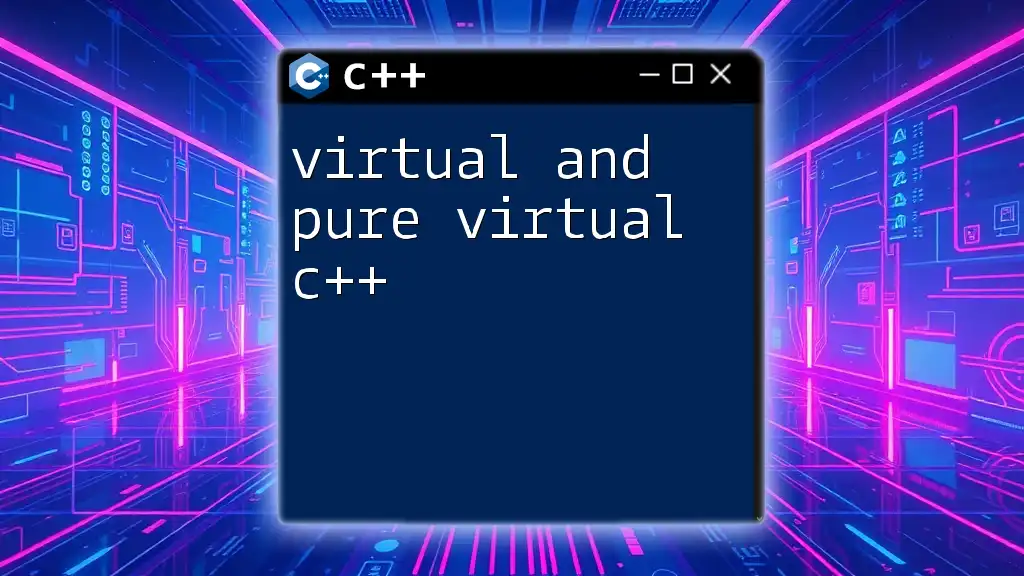
Understanding Pure Virtual Functions in C++
What are Pure Virtual Functions?
A pure virtual function is a virtual function that has no definition in the base class. It is declared by assigning `= 0` in the declaration. Its primary purpose is to create an abstract class, which cannot be instantiated directly but provides a clear contract for derived classes.
Pure virtual functions enforce that derived classes implement the specified function, establishing a more robust framework for polymorphism.
Syntax of Pure Virtual Functions
Here’s how you declare a pure virtual function:
class AbstractBase {
public:
virtual void show() = 0; // Pure virtual function
};
class ConcreteDerived : public AbstractBase {
public:
void show() override {
std::cout << "Show Concrete" << std::endl;
}
};
In this example, `AbstractBase` includes a pure virtual function `show()`. Any class derived from `AbstractBase` must provide its own implementation of `show()`, as seen in `ConcreteDerived`.
Differences Between Virtual and Pure Virtual Functions
Understanding the distinction between virtual and pure virtual functions is essential:
| Feature | Virtual Function | Pure Virtual Function |
|---|---|---|
| Purpose | To provide a default implementation | To create an abstract class |
| Declaration | Declared with `virtual` keyword | Declared with `= 0` |
| Implemented in derived class | Yes | Must be implemented in derived class |
| Instance of base class | Can be instantiated | Cannot be instantiated |
While virtual functions allow default implementations, pure virtual functions create a framework where derived classes must explicitly specify the behavior.
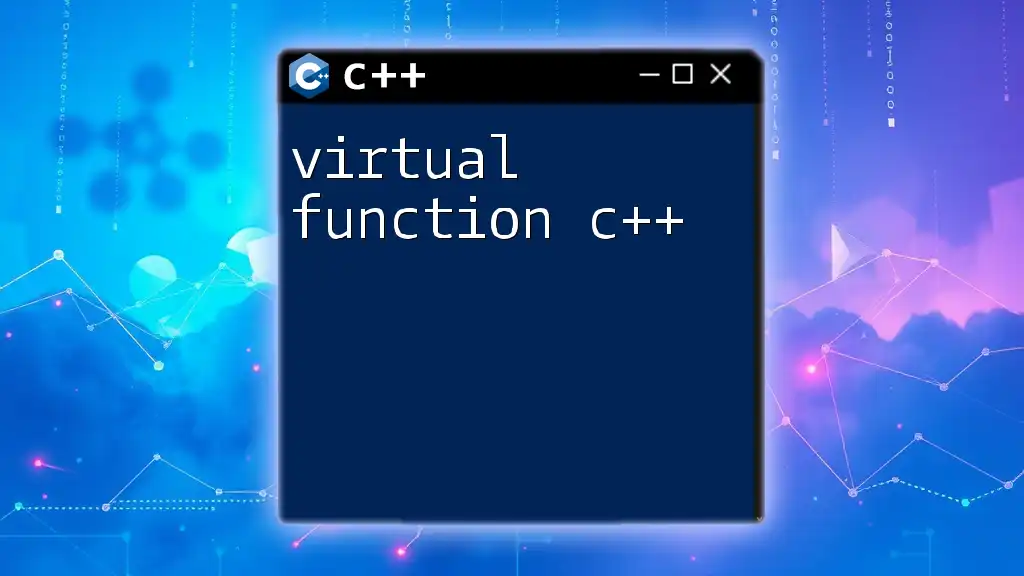
Real-world Applications
Use Cases for Virtual Functions
Virtual functions are commonly used in scenarios requiring shared functionalities among related classes. For instance, consider a shape hierarchy:
class Shape {
public:
virtual double area() = 0; // Pure virtual function
};
class Circle : public Shape {
private:
double radius;
public:
Circle(double r) : radius(r) {}
double area() override {
return 3.14159 * radius * radius;
}
};
class Rectangle : public Shape {
private:
double width, height;
public:
Rectangle(double w, double h) : width(w), height(h) {}
double area() override {
return width * height;
}
};
Here, `Shape` serves as an abstract base class for various shapes, enforcing the implementation of the `area()` function in derived classes, like `Circle` and `Rectangle`.
Use Cases for Pure Virtual Functions
Pure virtual functions can be factored in applications requiring explicit contracts like user-defined interfaces. For example, consider a payment system:
class PaymentMethod {
public:
virtual void pay() = 0; // Pure virtual function
};
class CreditCard : public PaymentMethod {
public:
void pay() override {
std::cout << "Payment made with Credit Card." << std::endl;
}
};
class PayPal : public PaymentMethod {
public:
void pay() override {
std::cout << "Payment made with PayPal." << std::endl;
}
};
In the above scenario, `PaymentMethod` is an abstract class defining a payment interface. Each derived class must implement the `pay()` function to specify the payment method's behavior, demonstrating a clean architecture.

The Importance of Virtual and Pure Virtual Functions
Benefits of Using Virtual Functions
Virtual functions allow for polymorphism in C++, leading to more flexible and maintainable code. They provide a way to write more generic and reusable components: instead of hard-coding the types of objects, you can program against abstract types.
Benefits of Using Pure Virtual Functions
The introduction of pure virtual functions allows developers to focus on abstractions. They facilitate the design of systems that are easier to extend and manage as requirements evolve. By specifying required behaviors without implementation details, pure virtual functions create a solid foundation for designing complex applications.
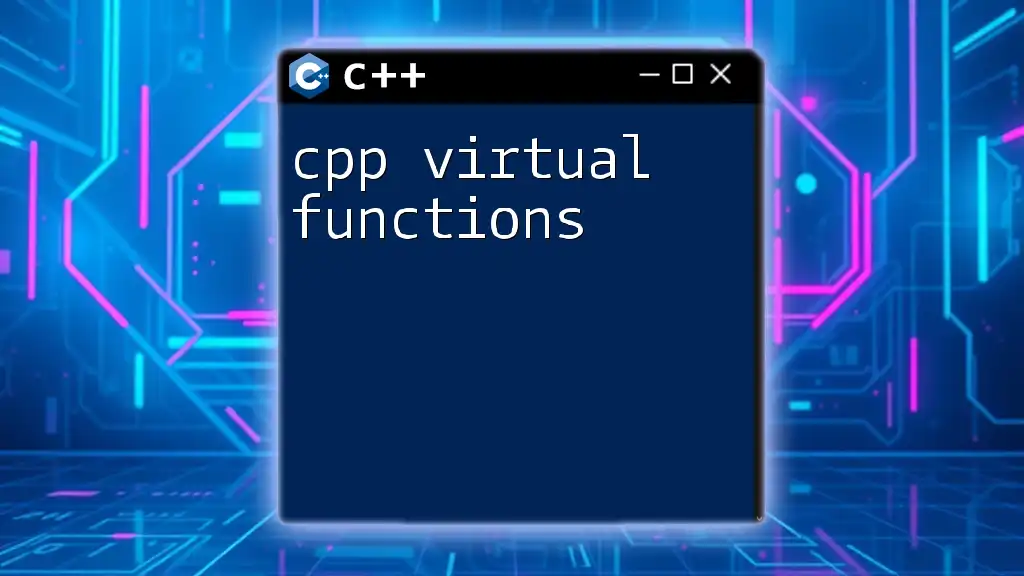
Common Mistakes and Best Practices
Mistakes to Avoid with Virtual Functions
- Not utilizing the `override` specifier: Always leverage `override` in derived classes to enable better compile-time checks.
- Neglecting virtual destructors in base classes: Always declare destructors virtual when working with polymorphism to ensure proper resource deallocation.
Best Practices for Writing Pure Virtual Functions
- Clearly define contracts: Ensure your pure virtual functions clearly articulate the requirements for deriving classes.
- Avoid unnecessary complexity: Keep the signatures of pure virtual functions straightforward to improve navigability and understanding.
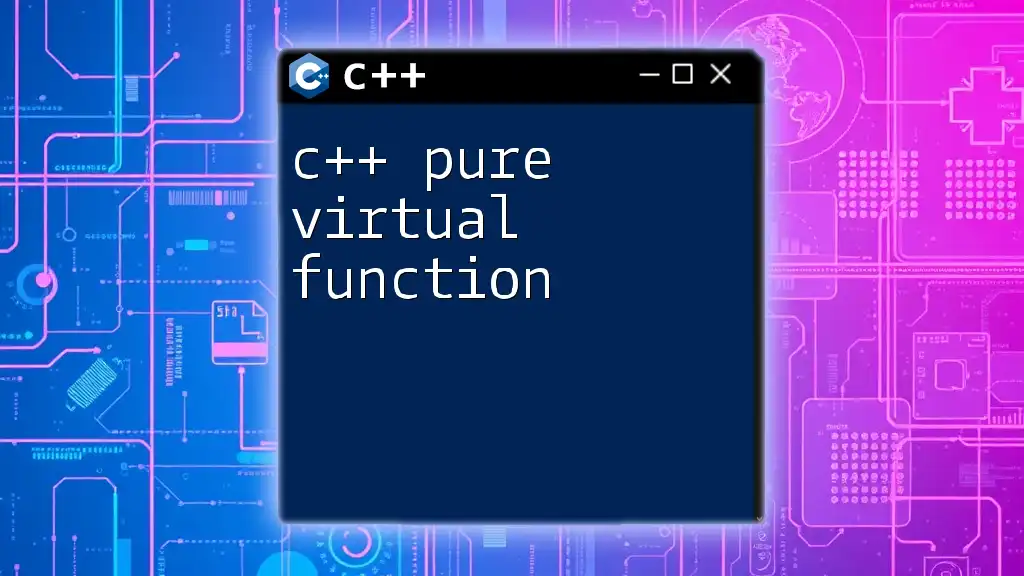
Conclusion
Virtual functions and pure virtual functions are crucial concepts in C++ that enhance object-oriented design through polymorphism and abstraction. Understanding how to effectively utilize these features empowers developers to create scalable and maintainable systems. By applying the principles discussed, you can leverage the power of C++ for robust software development.
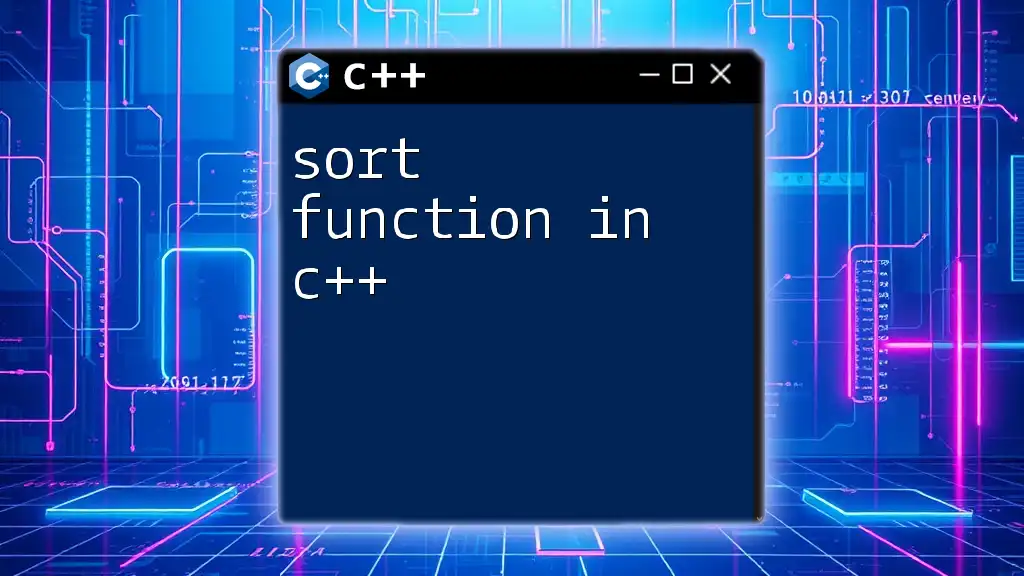
Further Reading and Resources
- Explore official C++ documentation and resources.
- Look into additional topics such as Abstract classes, Interfaces in C++, and Polymorphism for a deeper understanding of object-oriented programming practices.

